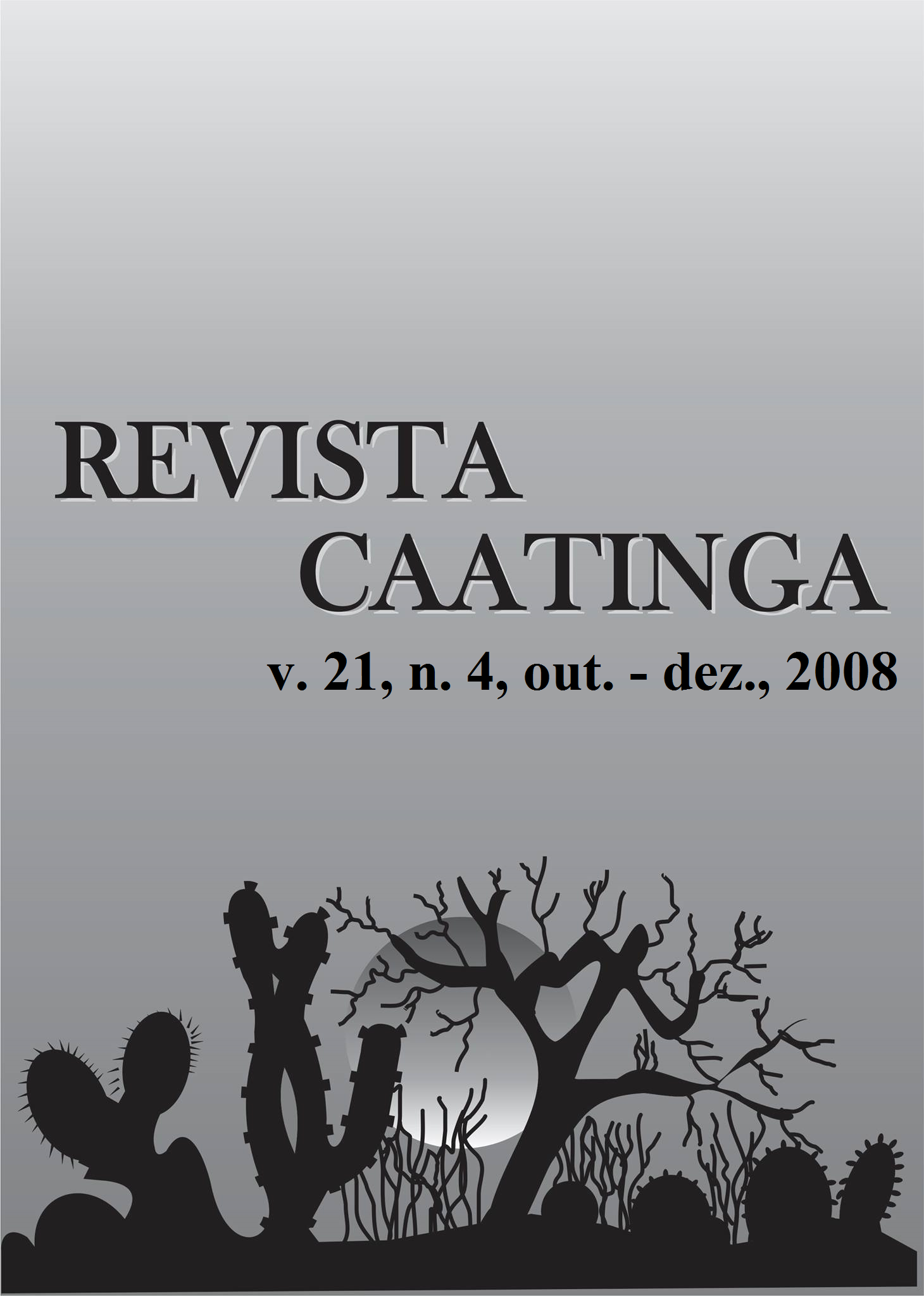EFFECT OF GRAZING BY STEERS AND A LONG DROUGHT ON A CAATINGA LIGNEOUS STRATUM IN SEMI-ARID NORTHEAST, BRAZIL
Palavras-chave:
Dry woodlands, shrubs and trees, new plants, native pastures, Tabebuia spongiosaResumo
A Caatinga vegetation was submitted to various grazing intensities (GI) by steers (1981-84) to verify their effect on ligneous stratum degradation. The study involved four GI: Heavy (1 steer/6.7 ha); Moderate (1 steer/10.0 ha); Light (1 steer/13.3 ha); Exclosure (no grazing). Areas under grazing varied from 40 to 80 ha, whereas exclosure had 20 ha. The research had two replications, occupying a total area of 400 ha. Data of woody species new plants density (NP) were determined annually in 1 m2 plots, and data of shrubs and trees density were determined by Point-Centered Quarter Method in 1982 and in 1984. NP density (Mean = 3.38 plants/m2) was neither affected by GI, nor by years, although it was highest in 1984 (3.83 plants/m2), the rainiest year. Taking into account the eight areas, there was linear relation (P<0.01) between 1982 and 1984 tree densities. There was linear relation between tree density and density of tree species in shrub stages in 1982, but not in 1984, because the drought probably affected shrubs but not trees. There was, for some tree and shrub species, linear relation between adult plant and NP densities. This fact occurred more in 1982. There was in 1983 a very high germination of the tree Tabebuia spongiosa (22.14 seedlings/m2), there being a linear relation (P<0.01) between NP and tree density.Downloads
Downloads
Publicado
Edição
Seção
Licença
Os Autores que publicam na Revista Caatinga concordam com os seguintes termos:
a) Os Autores mantêm os direitos autorais e concedem à revista o direito de primeira publicação, com o trabalho simultaneamente licenciado sob a Licença Creative Commons do tipo atribuição CC-BY, para todo o conteúdo do periódico, exceto onde estiver identificado, que permite o compartilhamento do trabalho com reconhecimento da autoria e publicação inicial nesta revista, sem fins comerciais.
b) Os Autores têm autorização para distribuição não-exclusiva da versão do trabalho publicada nesta revista (ex.: publicar em repositório institucional ou como capítulo de livro), com reconhecimento de autoria e publicação inicial nesta revista.
c) Os Autores têm permissão e são estimulados a publicar e distribuir seu trabalho online (ex.: em repositórios institucionais ou na sua página pessoal) a qualquer ponto antes ou durante o processo editorial, já que isso pode gerar alterações produtivas, bem como aumentar o impacto e a citação do trabalho publicado (Veja O Efeito do Acesso Livre).







